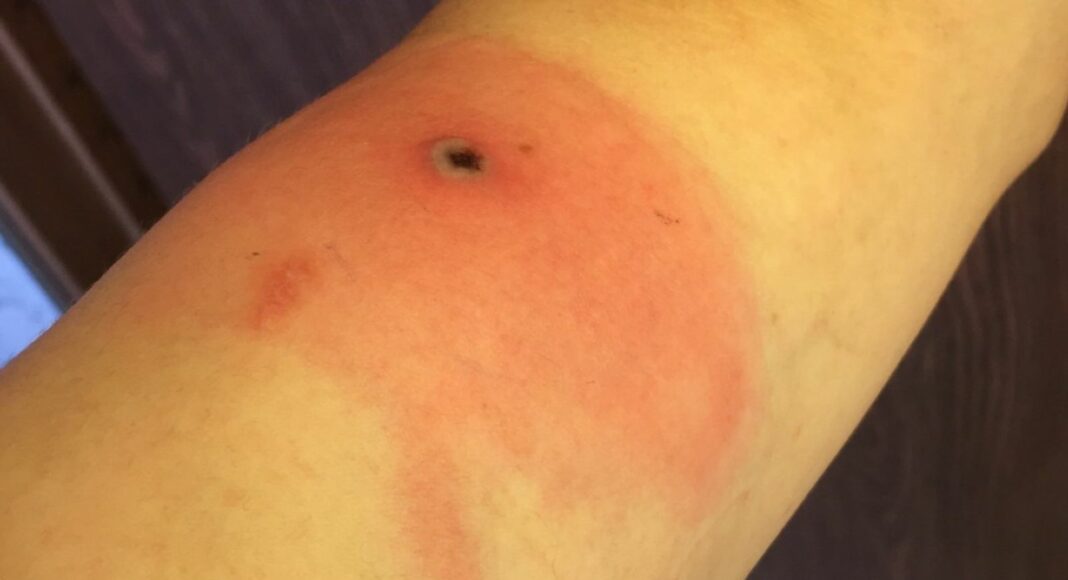An elderly man from Alaska has become the first person to die after contracting Alaskapox – a recently discovered viral disease.
But how dangerous is Alaskapox, how many people have caught it and what are the symptoms? Here’s everything you need to know.
What is it?
Alaskapox, or AKPV, is a double-stranded DNA virus with officials saying it appears to be zoonotic, primarily circulating across Alaska’s state mammals with occasional transmission to humans.
It’s a type of bug known as an orthopoxvirus. The most well-known variation of this type of virus is smallpox. There’s also camelpox, cowpox, horsepox and mpox – formerly known as monkeypox.
When was it discovered and how many people have had it?
It was discovered in 2015 in a woman who lived near Fairbanks, Alaska, hence the name Alaskapox. She was diagnosed after she began suffering from a localised rash and swollen lymph nodes.
It has mainly been found in small mammals, including red-backed voles and shrews, but health officials say household pets may also carry the virus.
Seven people, all in Alaska, have been infected with it in the last nine years.
The latest known case was the elderly man from Kenai Peninsula, to the south of the state, who health officials say was undergoing treatment in hospital when he died in late January.
Image:
The man was from the Kenai Peninsula, in the south of Alaska. Pic: iStock
How does it spread?
Officials believe it’s through contact with infected animals.
There has been no documented case of it spreading from one person to another. But other viruses in the same family can spread when one person comes in contact with another person’s lesions, so Alaska health officials are advising anyone with an Alaskapox lesion to cover it with a bandage.
Officials said it was “unclear” how the man who died was exposed to the virus – although he had reported caring for a stray cat at his home which had scratched him, possibly causing the transmission.
What are the symptoms?
Symptoms have included one or more bumps or pustules on the skin, as well as joint or muscle pain and swollen lymph nodes.
Nearly all patients had mild illnesses that resolved on their own after a few weeks without the need for treatment.
Image:
An Alaskapox lesion photographed over a four-week period. Pic: AP/Alaska Department of Health
The man who died in January was being treated for cancer and had a suppressed immune system because of the drugs, which the Alaskan health department said likely contributed to the severity of his illness.
He spotted a red bump in his armpit in September and was given antibiotics, however his symptoms worsened as he experienced fatigue and increased pain in the area and shoulder.
After his right arm’s range of motion was impacted, the man was transferred to a hospital in Anchorage where he reported further symptoms including pox-like lesions, the case report said.
An “extensive battery” of tests were performed and showed a positive result for cowpox.
While his condition improved one week into the therapy, he would soon suffer from delayed wound healing, respiratory and kidney failure, resulting in his death.
The man began to improve about a week after treatment with intravenous medications but died in late January after experiencing kidney failure and other systemic declines, according to officials.
Could this spread beyond Alaska?
Officials have yet to comment on the possibility of the virus spreading to other regions.
As we said before, all seven cases detected so far have been in Alaska, and six of those have occurred in people living in the same borough: Fairbanks North Star Borough (FNSB).
Read more on Sky News:Blood test ‘could predict dementia risk’What are the symptoms of measles?
The latest case, however, was found in the elderly man living in the Kenai Peninsula Borough, which is 370 miles from FNSB, according to Google Maps.
A statement from the Alaska Division of Public Health explains how prevalent the virus could be throughout the US state: “While animal trapping studies have confirmed the presence of the virus in small mammals in FNSB, it is likely that the virus is present more broadly in Alaska’s small mammals and that more infections in humans have occurred but were not identified.
“More animal testing is occurring to better understand the distribution of the virus in animal populations throughout Alaska.”
How to protect yourself and pets once the virus is caught
Officials say the best ways to keep pets and family members safe is to keep a safe distance and wash your hands after being outdoors. It also advises avoiding keeping wildlife as pets.
Any lesions that are found should be covered, kept dry and not touched, they add.




